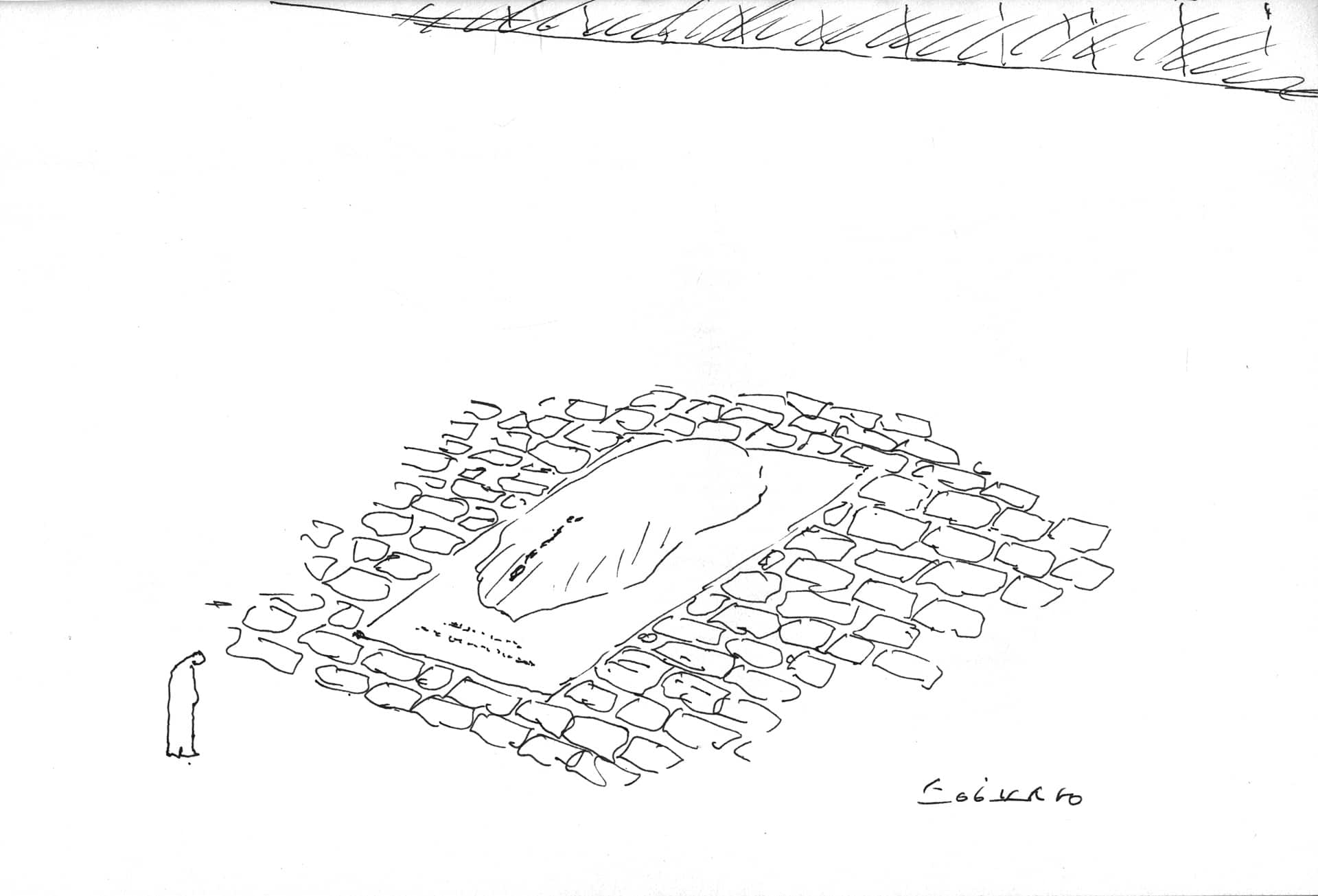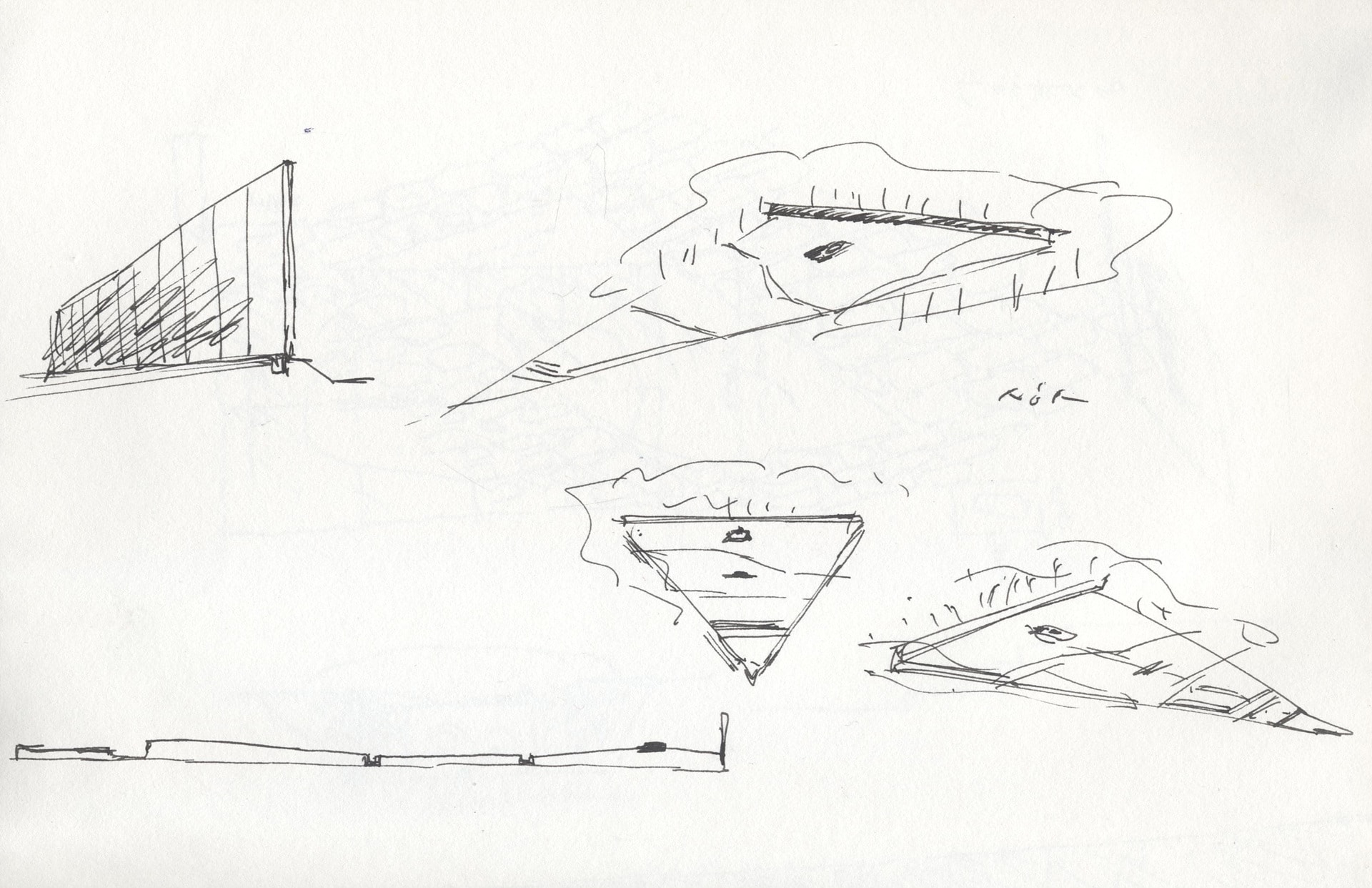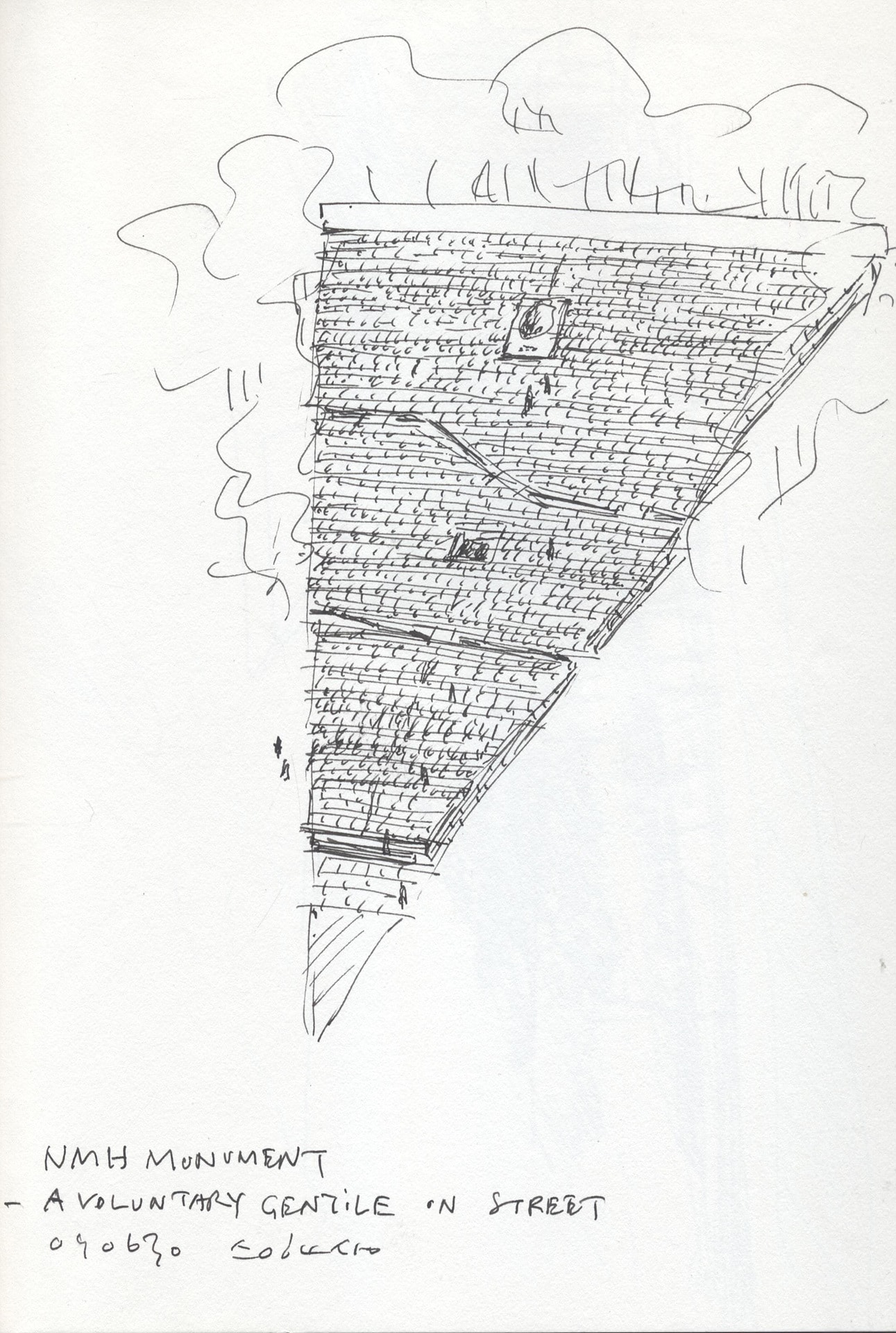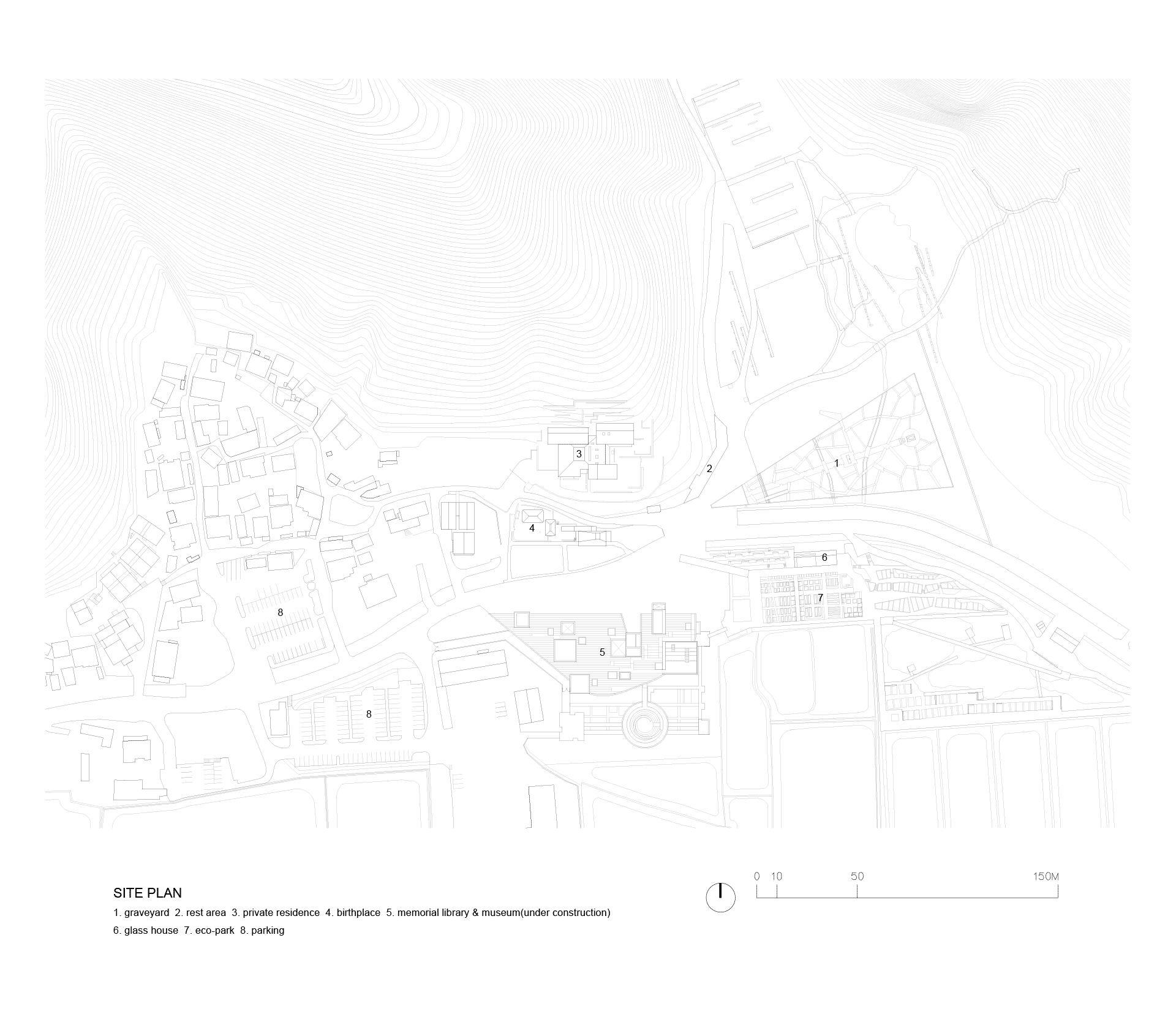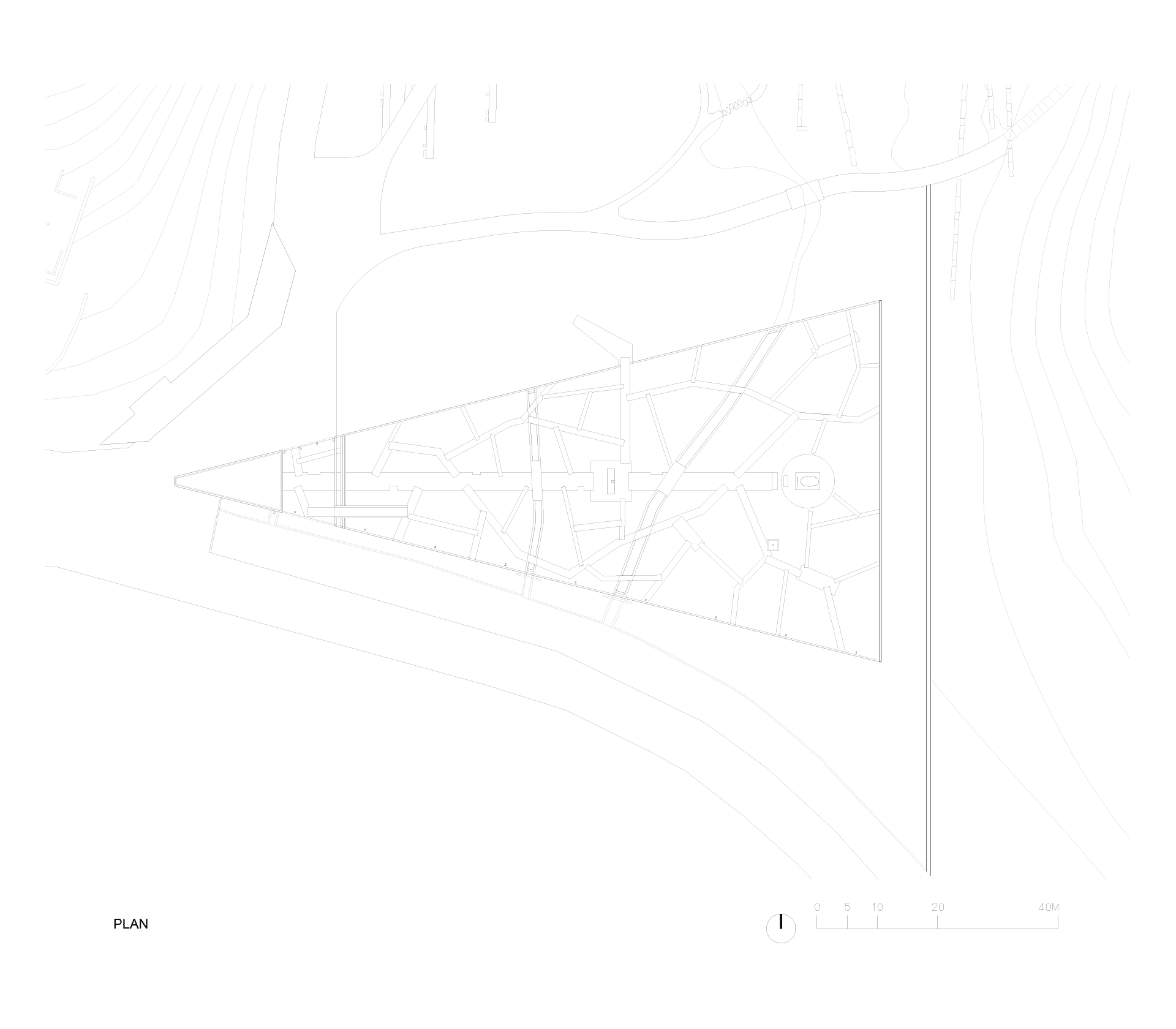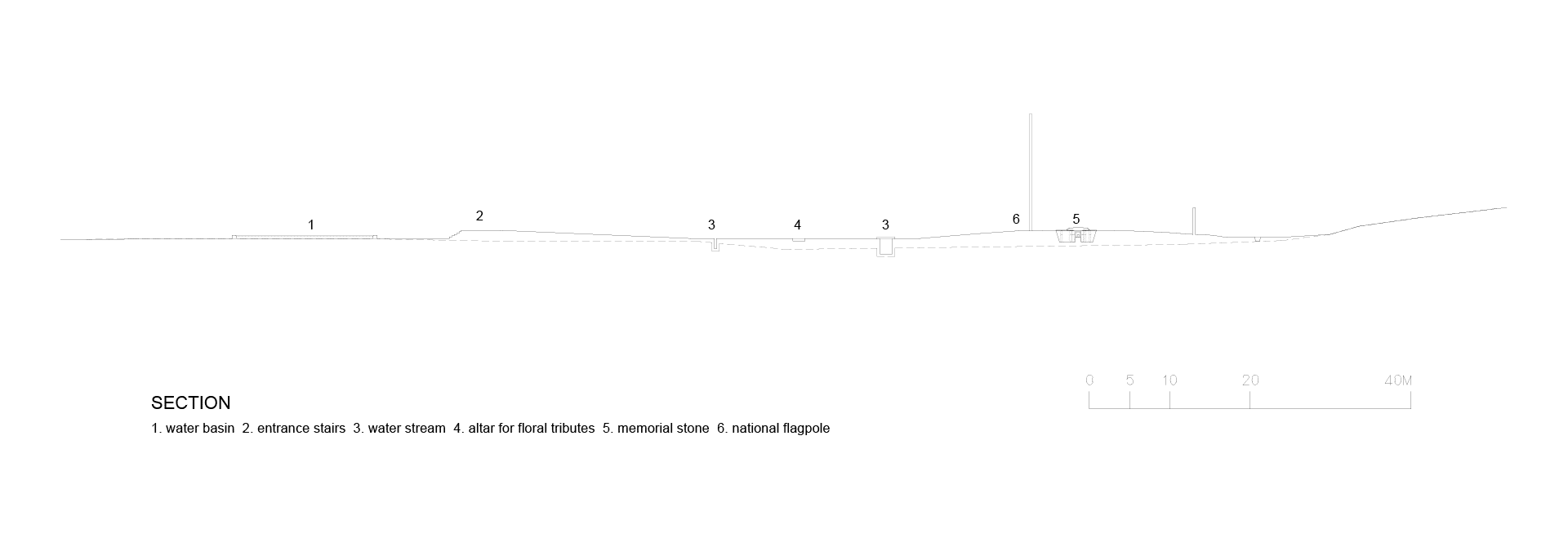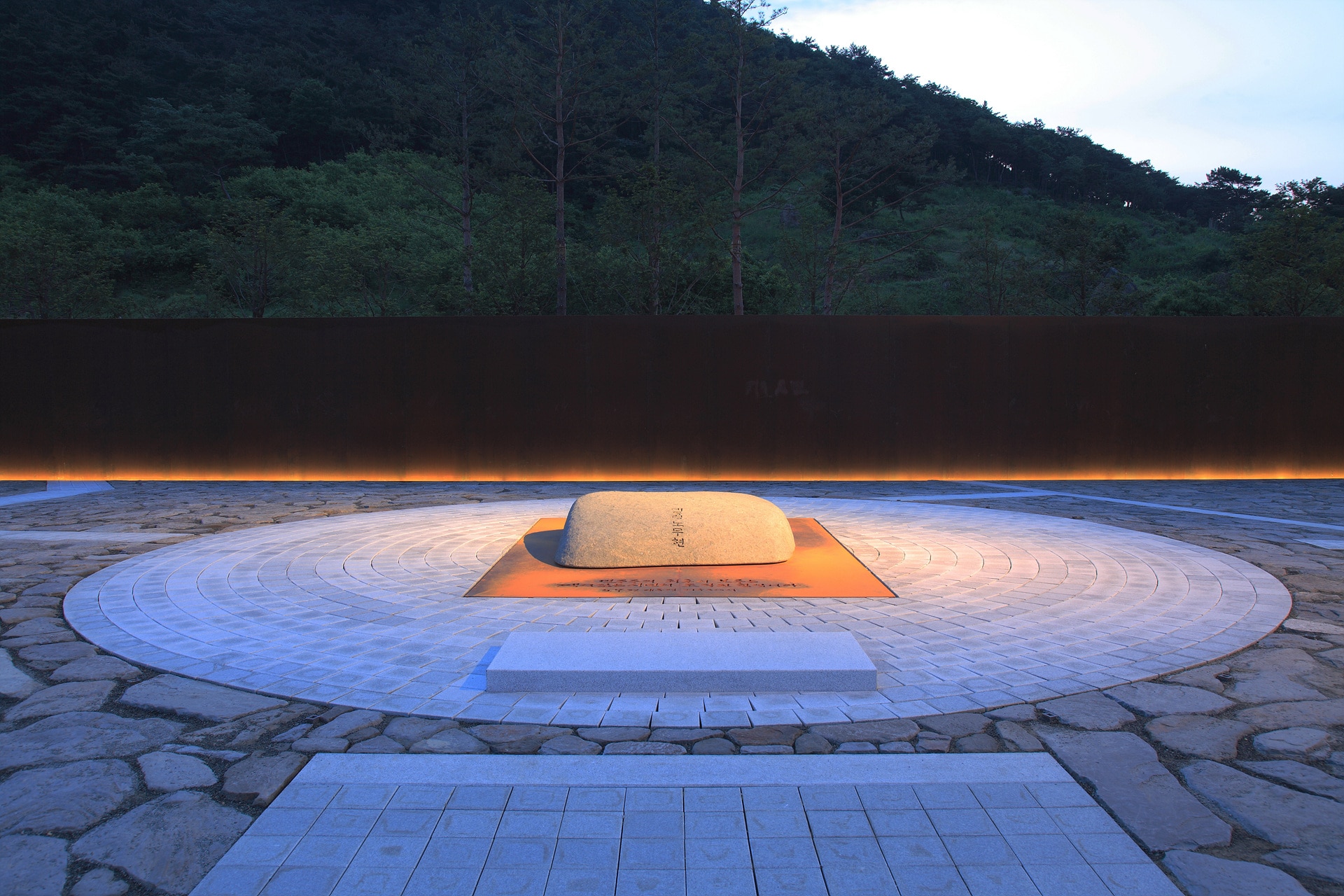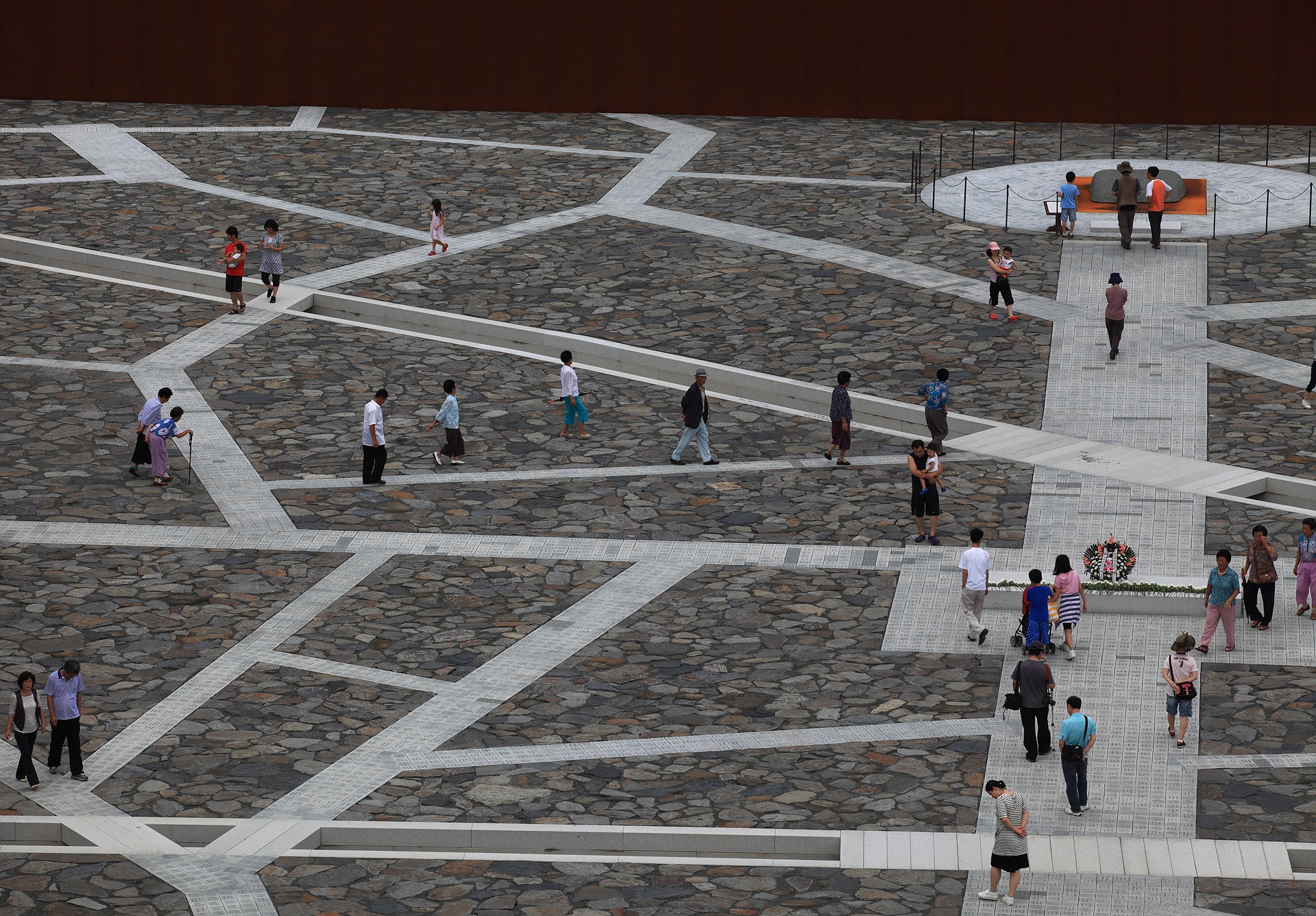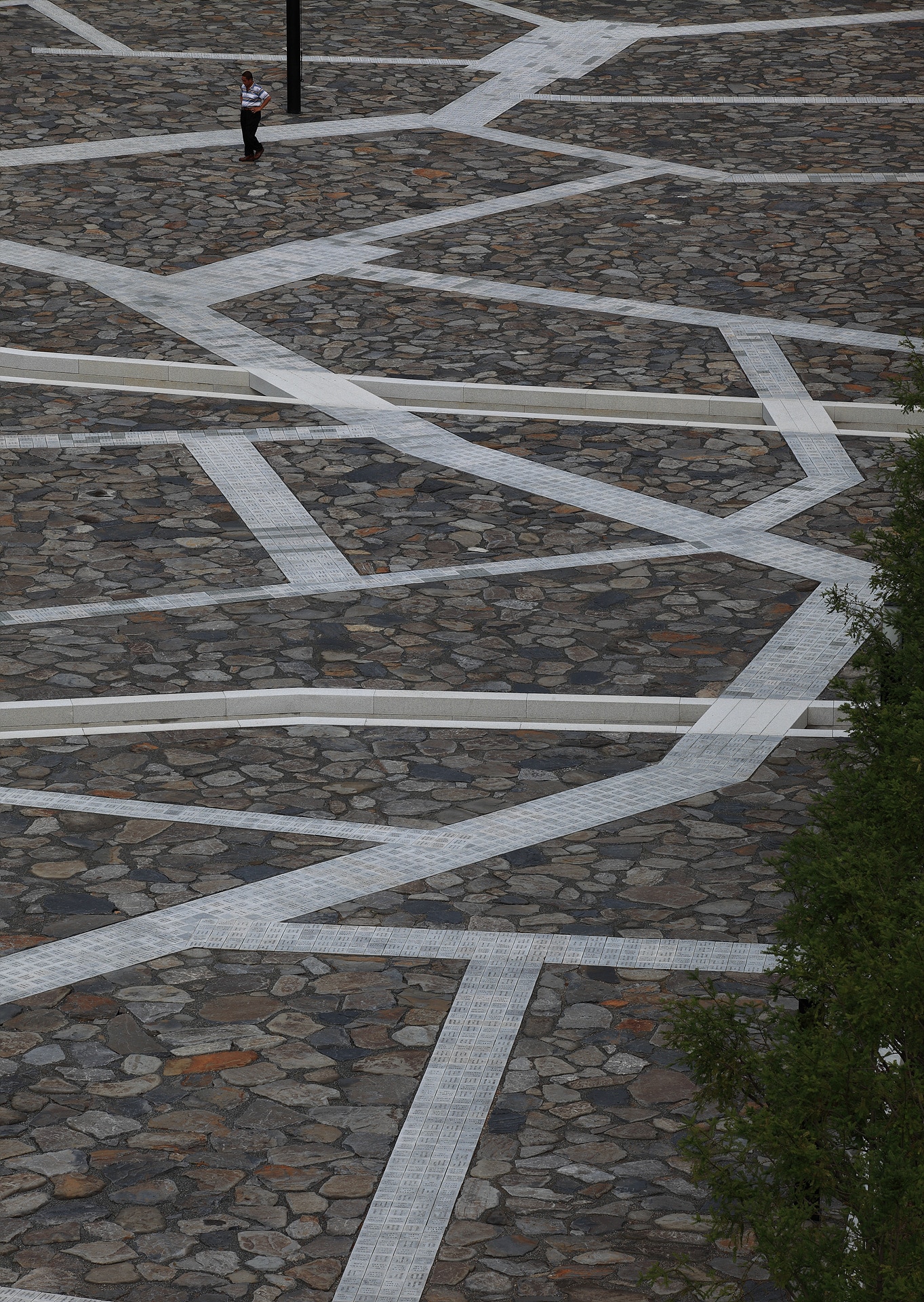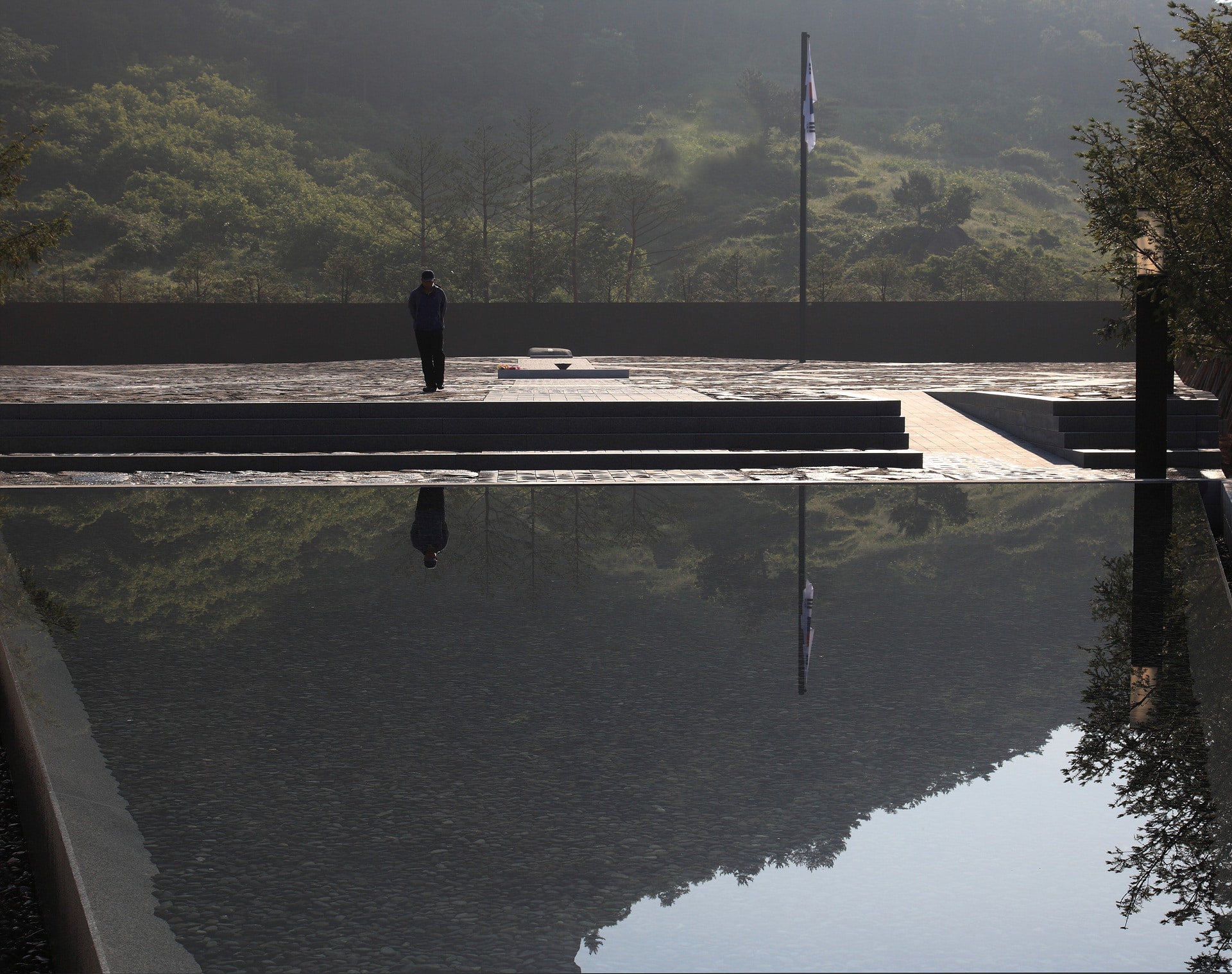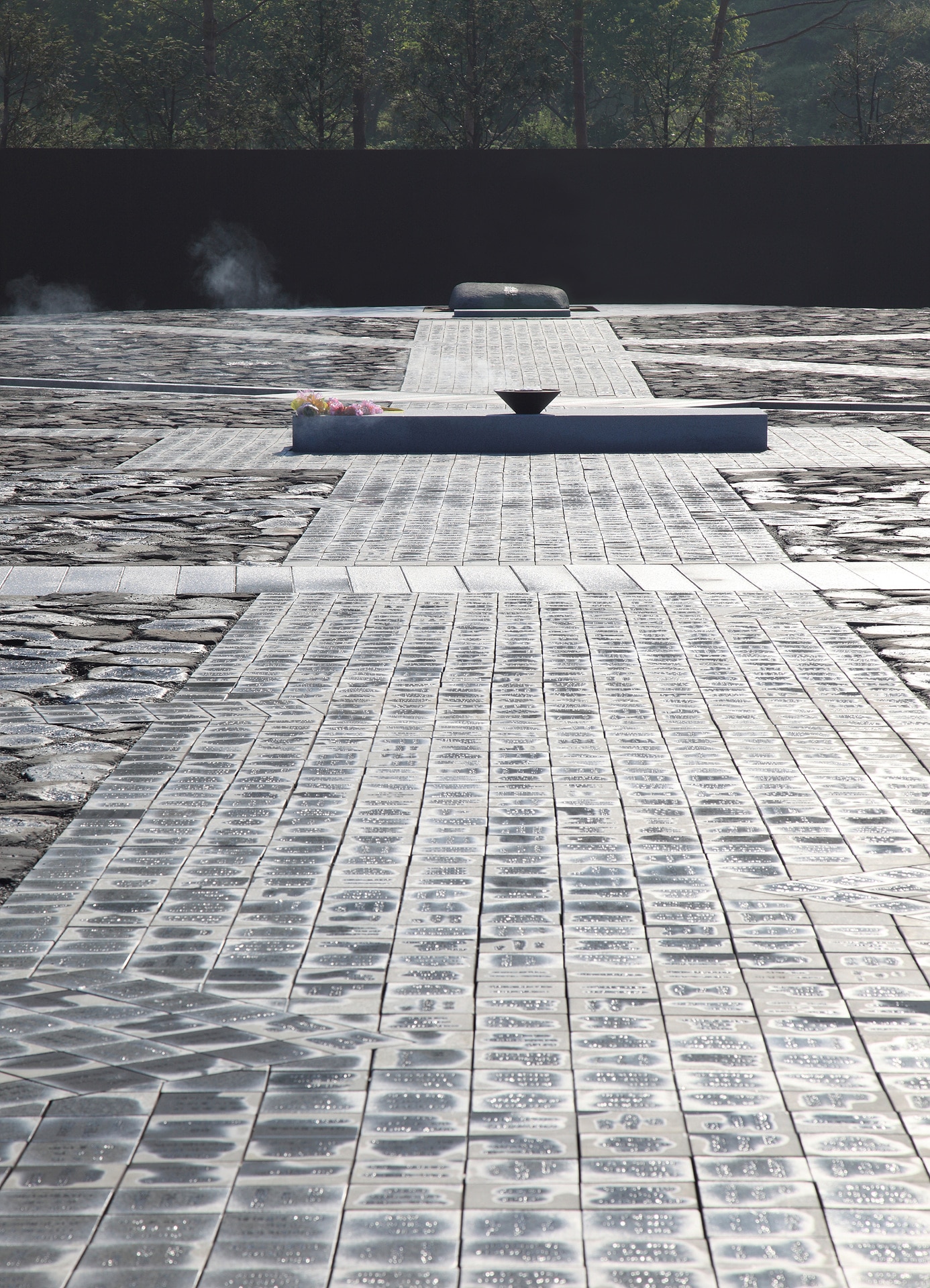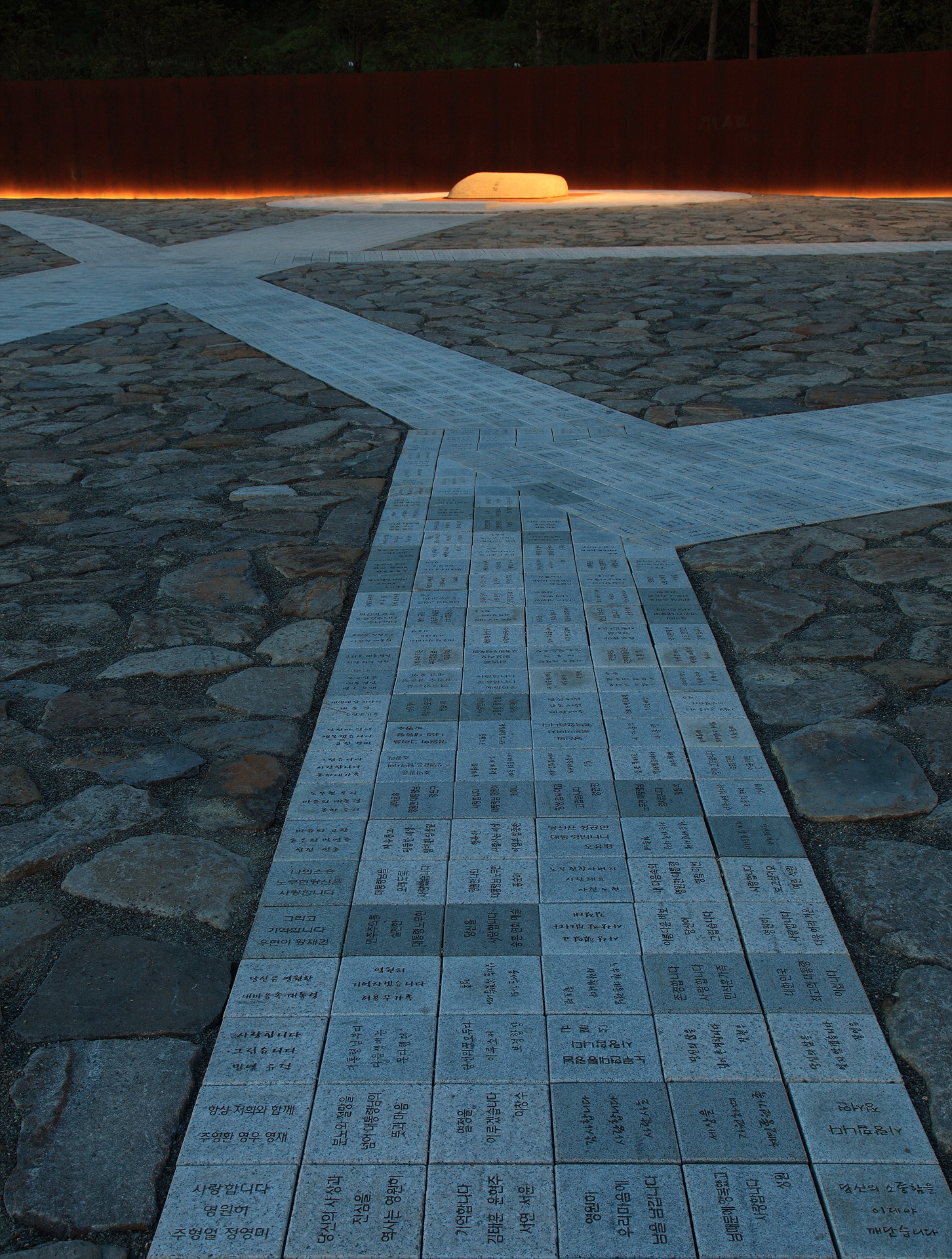Graveyard of President Roh Moo-hyun
| 완공년도 | 2010 |
| 위치 | 경상남도 김해 봉하 |
| 대지면적 | 3,505㎡ |
| 완공년도 | 2010 |
| 위치 | 경상남도 김해 봉하 |
| 대지면적 | 3,505㎡ |
2009년 5월 23일 아침, 노무현 전대통령이 그의 고향마을 바위절벽에서 투신하여 목숨을 끊은 일이 발생했다. 그의 재임 중 벌어진 부정한 일의 왜곡으로 인한 이 사건의 정치적 배경과 그 과정이 어떠했든, 나를 포함한 이 땅을 사는 모든 이들이 노무현과 자신과의 관계를 다시 생각하기 시작했다. 그는 우리 사회에 생소한 사람이었다. 여느 기득권자처럼 풍요로운 삶을 누릴 수 있었지만 그는 늘 경계 밖으로 자신을 내몰았고 경계 안의 관습을 질타했다. 《권력과 지성인》의 저자 Edward Said에 따르면 “애국적 민족주의와 집단적 사고, 그리고 계급, 인종, 성적인 특권의식에 의문을 제기하는 이”는 지식인이며 노무현의 단호한 삶이 그랬다. 그래서 모두에게 그의 죽음은 시대적 성찰이 되었다. 그런 이의 죽음은 높은 곳에 있는 국립묘지의 진부한 형식과 맞지 않았고, 그는 이미 유서에서 이 장소를 거부하며 고향마을에 작은 비석을 세워줄 것을 당부했다. 그 일을 위임받은 나는 그가 투신한 바위 밑 평지의 땅을 그의 화장된 유해가 안치할 장소로 정헀다. 이 삼각형 모양의 평지는 마을과 자연을, 현실과 영원을 연결하는 듯한 매개점에 놓여 있으니, 산 자와 죽은 자가 만나는 묘역의 위치로는 적격이었다. 더구나 땅 안으로 흘러드는 두 개의 물줄기가 이 땅의 성격을 이미 정해 놓고 있는 듯했다. 현실에서 떠나도록 땅을 들어 올리고 높낮이를 조절하여 감성적 지형을 형성했다. 그 위는 사람 사는 세상을 주장한 그를 그리며 한 평범한 마을의 지도를 바탕으로 화강석 박석을 깔고, 시민들의 추모사를 새겼다. 만5천명이 비용을 내며 순 자발적으로 참여하여 이룬 바닥은 장대한 설치미술이 되었다. 국립묘지로 지정된 이 묘역에는 한 해에 백만명이 찾아 온다. 그 중에는 묘역을 참배만 하고 가는 이들은 거의 없고 이곳저곳을 살피며 한참을 서성인다. 바로 스스로를 성찰하는 풍경이다. 그래서 이 묘역이 완성된 직후 ‘스스로 추방당한 이들을 위한 풍경’이라는 제목의 책을 내었다. 성찰적 풍경. 누구든지 자기 존재의 의미에 대해 묻고자 할 때, 그리고 그로 인해 고독하고 적막할 때 여기를 찾아 이 광장 위에 서서, 스스로 추방된 자의 고귀한 가치를 찾는 풍경이 되면 좋겠다.
On the morning of May 23, 2009, former President Roh Moo-hyun committed suicide by jumping from a mountain cliff in his hometown. Regardless of the political background and process of this incident, everyone living in Korea began to rethink his or her relationship with the late Roh. He was a stranger in our society. He was able to enjoy a rich life like other people with vested interests, but he always drove himself out of the boundary and criticized what was established within the boundary. According to Edward Said, author of Representations of the Intellectual, “ …… intellectuals should be the ones to question patriotic nationalism, corporate thinking, and a sense of class, racial or gender privilege.” And, Roh Moo-hyun’s decisive life was really a life an intellectual ought to live. Accordingly, his death was a reflection of the times to everyone. The death of such a man should not match the hackneyed form of the National Cemetery on the visible high ground. Furthermore, he had already rejected this place in his last will, and asked for the burial of his body with a small gravestone in his hometown village. Upon the request of the funeral committee to fulfil his las will, I suggested a flatland below the rock from which the late president jumped, for a place where his cremated remains would be interred. As this triangular flatland lies at the point of connecting village and mountain, as if reality and eternity, it could nicely become the location of a graveyard where the living and the dead meet. Moreover, two streams flowing to the flatland seemed to have already set the character of this land. The new ground was lifted and adjusted the elevation to create an emotional terrain so that the graveyard could look like a place far from the reality. Lots of granite stone pieces were laid on the surface of the floating land shaping a village map, and each piece was inscribed with a memorial statement of each of the citizens who paid for the cost. The stone floor, which 15,000 people voluntarily paid for, became a grand installation art. This area as a national graveyard gathers a million people visit to pay respect to the late Roh each year. Most of visitors used to look here and there, and stand still for a long while as if they were lost in thought. It is the scene of their reflection. That is a landscape for the people who are voluntary gentiles. When people want to ask about the meaning of their being, and when they feel lonely and desolate, standing here on this square and looking for the noble value of the voluntary gentiles is highly recommended.


